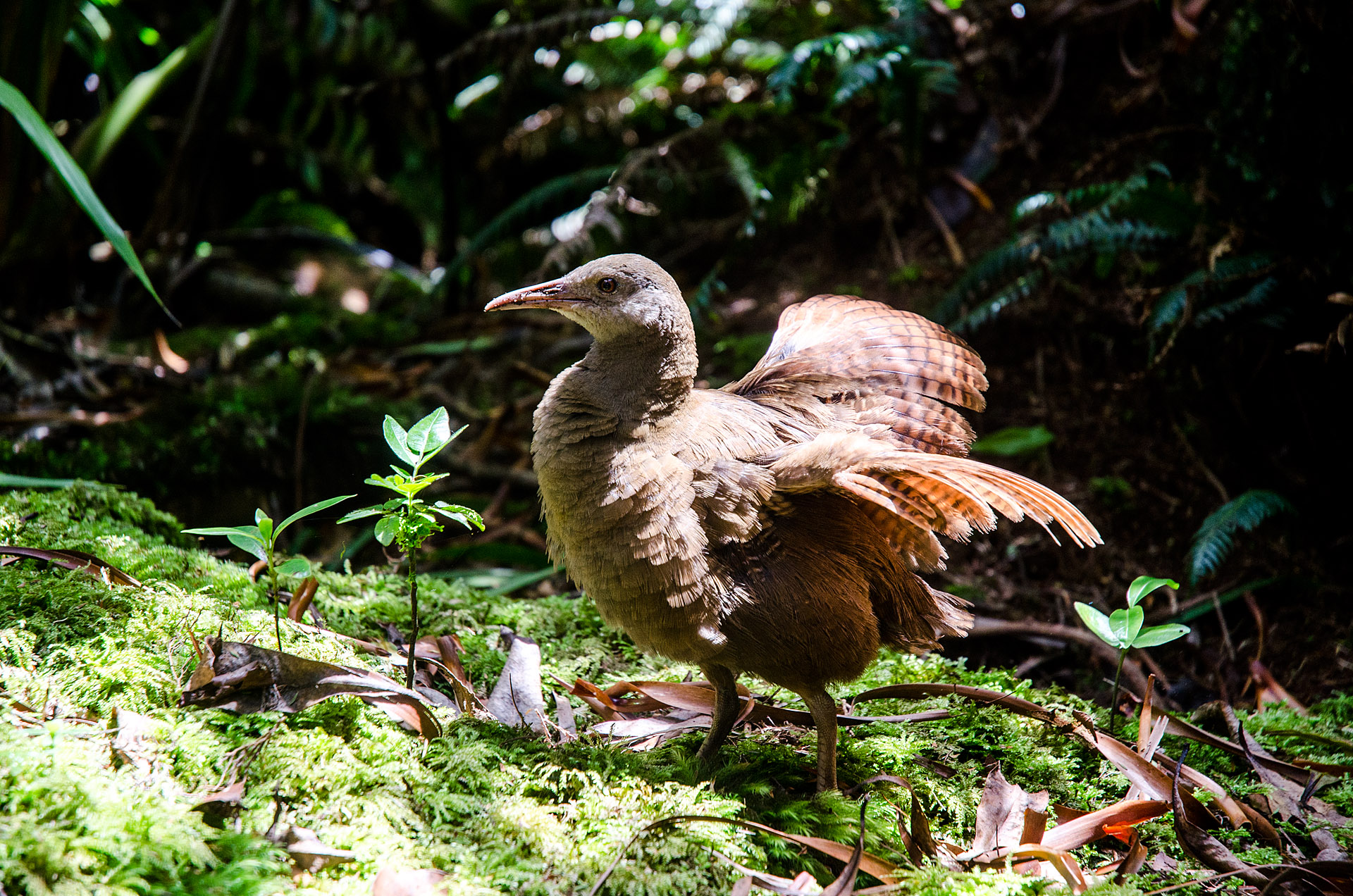Lord Howe Island is home to a few special birds, worthy of their own edition of the Birders’ Digest. Although home to many migrants and species that have made it over from the mainland, only a couple endemic species remain. The other endemics have been wiped out – a few by the islanders who settled there, but most by the rats they brought along in their ships.
The Lord Howe woodhen is one of the last remaining endemic species. Only a couple hundred of these little brown birds remain in the wild, making it one of the rarest birds in the world. The woodhen survived the rats and settlers due to its preference for the higher, difficult-to-access regions of the island on Mt. Gower and Mt. Lidgbird, though at one point there were as few as 15 birds known to be alive. We were lucky enough to see 6 or 7 of them in our travels around the island, including a pair that wandered through our summit lunch on Mt. Gower, and another on Gower that approached me with wings flared. Clearly intimidated, I fled – but not before a quick photo.
Another endemic sub-species is the Lord Howe currawong. Also threatened, this large, intelligent bird tends to be curious about the humans in its area. We spent much of our Gower climb being watched from nearby bushes by bright yellow eyes.
One of the migratory birds that the island is known for is the white tern. The white tern lives up to its name, being beautifully, stark white except for a black ring around its eye. Apparently, they skip the whole nest-building exercise that most birds go through, choosing instead to simply lay a single egg precariously in the crook of a tree branch. If their first egg is unsuccessful (through predation, sickness, or parental clumsiness & gravity), they will try again later in the season. All of the chicks we saw were the parents’ second egg of the year.
The flesh-footed shearwater is another interesting bird, which the locals refer to as a mutton bird. The term is said to have come from settlers who ate the birds and named them after their supposed taste. Lord Howe is home to the largest nesting site in the world for the shearwaters, and the only one in eastern Australia. The birds nest underground, digging burrows an astonishing 1-4 meters deep in the sand of the forest floor, and requiring walkers around the beaches to take care in order to avoid broken ankles. They spend the day on the water and, at dusk, return to the island to tend to their chicks. A night walk down almost any shore road on Lord Howe will be filled with the cries of the shearwaters and shining a flashlight into the woods will reveal many dark eyes peering back.


































Baby ball of fluff is adorable. But…how do you know all the babies you saw were the second attempts? If it’s due to the time of the year, how do you know the first attempt was unsuccessful? Could they not have raised one chick and then had another? Also, the currawong looks remarkably like a corvidae, but it isn’t (I just looked it up). Is that simply because it speaks with an Australian accent?
Glad you ran away from that scary woodhen. Lots of dangers out there. Be safe!